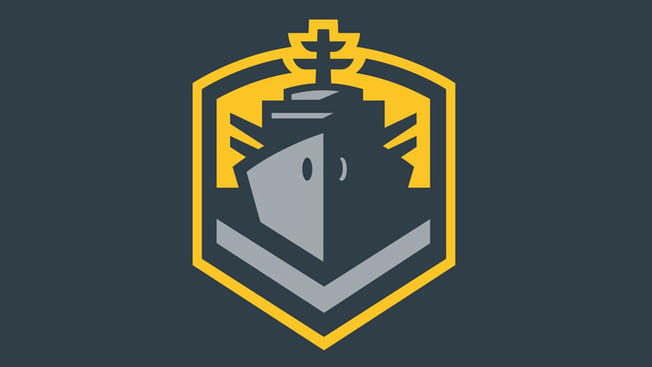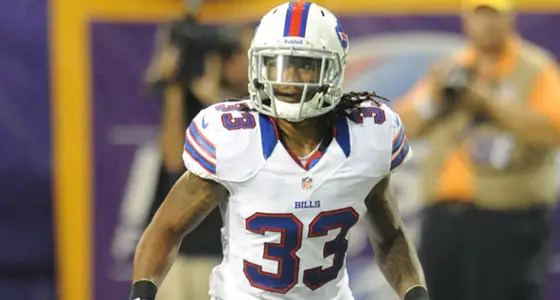San Diego Fleet Roster Breakdown: Cornerbacks

Credit: SD Fleet

After finishing up our positional breakdowns of the Fleet’s offense, let’s now focus on the defensive side of the football.
First up on our agenda: The cornerback position.
Most have heard the saying “defense wins championships” in their lifetime. Whether you personally believe it or not, it’s true in regard to football. An elite defense, like the 2000 Baltimore Ravens or 2016 Denver Broncos, can win a championship on its own.
Having an elite secondary is, outside of a dominant pass rush, a serious building block towards cementing a defense as elite. The game of football has transitioned into a “pass happy” game and with teams throwing the ball like crazy nowadays, a strong secondary is essentially a necessity to win.
Luckily for the Fleet, they have the pieces in place to have a formidable secondary that may catapult their defense to the top of the AAF.
Jude Adjei-Barimah is the first cornerback up on our list. The 5’10”, 205 pound native of Italy attended Bowling Green University, where he played in 52 games for the Falcons. In those games, Barimah recorded 150 total tackles, 8.5 tackles for loss, 2.5 sacks, five interceptions, 14 pass deflections, and forced two fumbles.
Despite putting up a solid career at Bowling Green, Barimah went undrafted in the 2015 NFL draft before the Buccaneers scooped him up as an undrafted free agent. Primarily a safety in college, the Buccaneers believed that Barimah would serve better as a cornerback and transitioned him into that role. He would see quite a bit of playing time in his two seasons with the Buccaneers, playing in 23 games and recording 62 total tackles, two sacks, three pass deflections, a forced fumble, and zero interceptions. The Buccaneers signed him to a one-year contract in 2017, but unfortunately, Barimah suffered a patellar fracture and was released by the team a few months later. He has tried out for a few teams, but has not appeared in an NFL game since 2016.
His game was primarily based around two things: tackling and speed. With a good frame came his great speed, as Barimah ran a 4.48 40-yard dash at his pro day and showed solid initial speed on tape. What he has in initial speed, he lacks in recovery speed. Once Barimah gets beat, he struggles mightily to recuperate from that. From a tackling perspective, Barimah has always been an above-average tackler. He racked up an impressive 150 tackles at Bowling Green and went on to record 56 total tackles in his NFL career despite only making eight career starts.
For me, Barimah is a better safety than he is a cornerback. His game best suits that of a player that can roam around and maintain his focus on pressuring the quarterback and stopping the run, rather than spending most of his time in coverage. With that being said, I could also see him moving inside as a slot cornerback and playing there. Barimah is a talented player, and being on a team with a weak secondary may help his chances of making the roster. Right now, he could potentially make the team as the fourth cornerback on the roster, but nothing higher than that.

One of the very few players on this entire team that was actually selected in the NFL draft is Ron Brooks. A fourth-round pick out of LSU in the 2012 draft, Brooks came out of college as an incredibly raw cornerback that was an outstanding athlete.
While at LSU, Brooks was often buried on the depth chart behind the likes of Patrick Peterson, Morris Claiborne, and Tyrann Mathieu. Brooks appeared in 53 career games at LSU, where he recorded 90 tackles, 12.5 tackles for loss, 5.5 sacks, 10 pass deflections, three interceptions, and forced five fumbles.
Brooks truly made a name for himself at the NFL combine. He ran an incredible 4.37 40-yard dash and also recorded a 38″ vertical, solidifying himself as an elite athlete at the time. Despite scouts concerns on how good of a cornerback he actually was, the Buffalo Bills took a chance on Brooks and selected him with the 124th pick in the 2012 NFL draft.
In four years with the Bills, Brooks appeared in 46 games where he recorded 62 tackles, four tackles for loss, and seven pass deflections. He started three total games during his Bills tenure and was primarily utilized as a special teamer because of his athleticism. After being released by the Bills following the 2015 season, the Eagles signed Brooks to a three-year deal. He started five games for them in 2016, but would eventually be placed on injured reserve and was released by the team at the end of the season.
Brooks is an extremely inexperienced player. In college and the NFL, Brooks primarily played in certain packages and only has 11 combined career starts. He is an extremely raw cornerback and needs to improve his overall technique to actually have success in the passing game. His ball skills are good, but he needs to focus on improving his footwork and hip-technique in order to have greater success in coverage. Brooks is not a bad tackler by any means, but he does need to focus on wrapping people up more and finishing the tackles that he starts.
Brooks’ calling card has always been his athleticism. He possesses elite-level speed that will at least give him an opportunity to play at any level. He was a fantastic special teamer, which is not as important in the AAF, and could see some time as the Fleet’s primary punt returner. This speed should allow Brooks to excel as a corner blitzer and we could see him utilized in this role a lot with the Fleet. He is a bit undersized (5’10”), but his athleticism allows him to play bigger than he is and this should not be a concern.
To me, Brooks has the mold of a fantastic athlete that needs a little more development as an actual cornerback. His athleticism cannot be ignored, however, and I think he would excel as a slot corner or could even be great in certain packages that involve a corner blitz. This alone gives Brooks a pretty solid chance of making the Fleet’s final roster.

Tyree Holder is easily one of the more “under-the-radar” players in the AAF that will turn some heads come the beginning of the regular season.
Holder played his college football at Ball State University, where he appeared in 36 career games. This total would be higher had Holder not suffered an injury his senior season that forced him to sit out the majority of the season. Throughout his college career, Holder recorded 74 total tackles, five interceptions, 17 pass deflections, and forced one fumble. He would eventually go undrafted in the 2017 NFL draft and has not garnered any serious interest from NFL teams.
On film, Holder looks like a fantastic cover corner. His 17 career collegiate pass deflections are impressive and he is really good at making plays on the football. He’s easily the Fleet’s best cover corner right now and could be one of the best in the entire AAF if he lives up to his potential. From a tackling perspective, Holder is an extremely intelligent tackler. He avoids going up on tackles, due to his small frame, and focuses more on wrapping the offensive player up at the legs. For a cornerback, his ability to tackle is really impressive and adds on another dimension to his game.
Moving onto his physical tools, Holder has great initial and recovery speed. To put it simply, he can absolutely fly on the football field. Receivers will have a hard time beating Holder in coverage because of how quick he is and how aggressive he plays at the line of scrimmage. He is not afraid, by any means, to go up and make a play for the football. He also has great size and length for a cornerback, standing at roughly six feet tall. This helps him out tremendously, as NFL teams are dying for long and lanky cornerbacks with great speed to fill out their roster.
While Holder is a great cornerback, in my opinion, nobody is perfect and he does have some flaws to his game. The biggest concern with Holder is his frame, as he weighs in at roughly 165 pounds. That frame, at any professional level, is extremely concerning because of how common injuries are in the game of football. Holder needs to add weight, to some extent, so that he has a better chance of staying on the field and going up against big-bodied receivers. While interceptions are typically a good way to measure a cornerback, this should not be the case when evaluating Holder. All five of his career interceptions came on blatantly overthrown passes that should have absolutely been intercepted. While he should receive some credit for actually making the play, an asterisk should come next to those numbers.
As far as his chances of making the roster, I would assume that they must be pretty high. Holder is the best cover cornerback on this entire team and would only not make the roster if he was to suffer an injury. There is legitimate potential for him to become one of the best cornerbacks in the entire AAF this season and could be the anchor of the Fleet’s secondary.
PAGE 2 LINK BELOW
Diego works at Prep Baseball Report as an Area Scout in Illinois and Missouri. He graduated this spring with a Bachelor Degree in Communications and played four years of college baseball, logging nearly 50 innings of work in a relief role. Diego hopes to work in an MLB front office one day and has been a Padres fan since he was six years old.